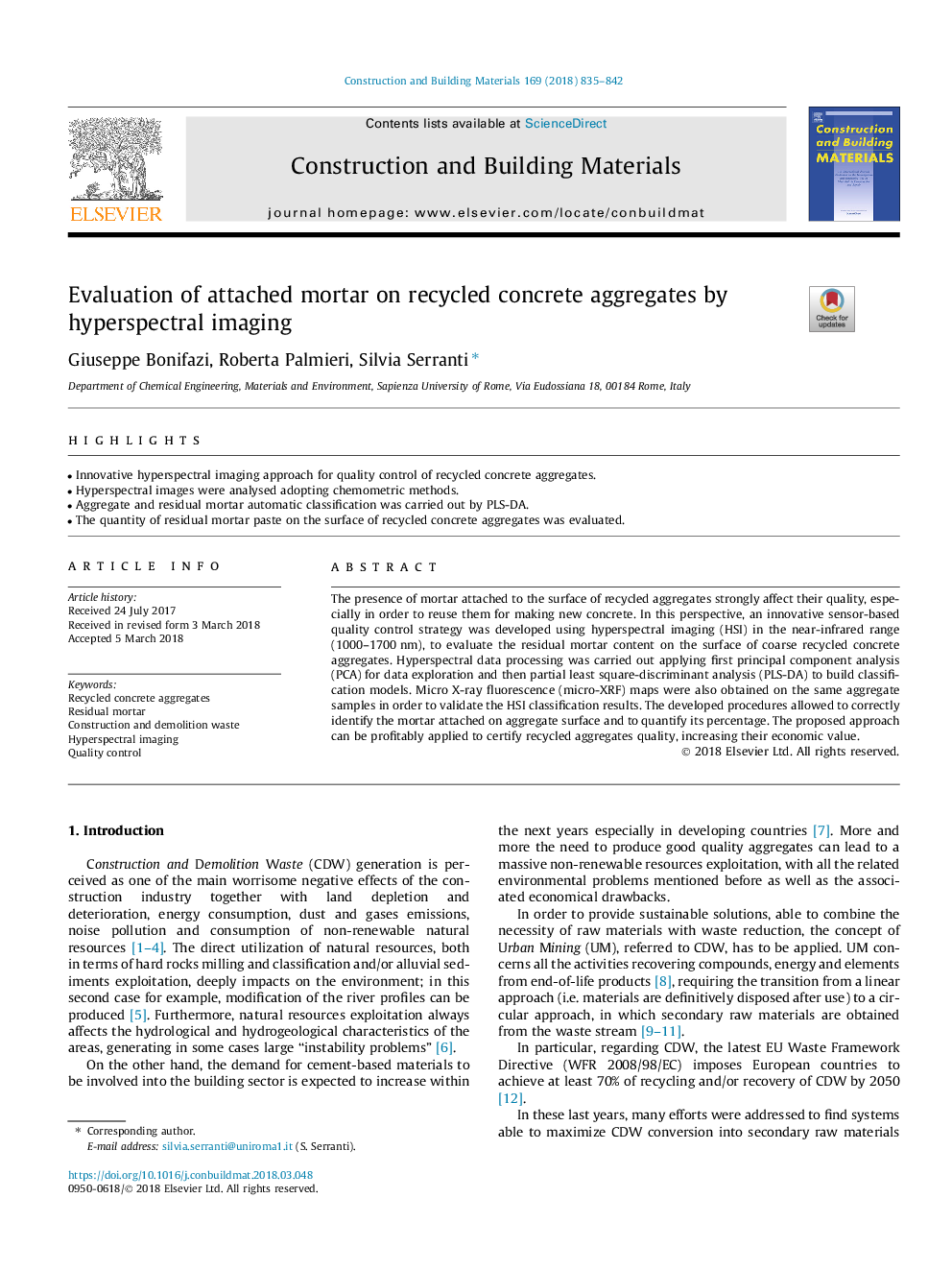| Article ID | Journal | Published Year | Pages | File Type |
|---|---|---|---|---|
| 6714680 | Construction and Building Materials | 2018 | 8 Pages |
Abstract
The presence of mortar attached to the surface of recycled aggregates strongly affect their quality, especially in order to reuse them for making new concrete. In this perspective, an innovative sensor-based quality control strategy was developed using hyperspectral imaging (HSI) in the near-infrared range (1000-1700â¯nm), to evaluate the residual mortar content on the surface of coarse recycled concrete aggregates. Hyperspectral data processing was carried out applying first principal component analysis (PCA) for data exploration and then partial least square-discriminant analysis (PLS-DA) to build classification models. Micro X-ray fluorescence (micro-XRF) maps were also obtained on the same aggregate samples in order to validate the HSI classification results. The developed procedures allowed to correctly identify the mortar attached on aggregate surface and to quantify its percentage. The proposed approach can be profitably applied to certify recycled aggregates quality, increasing their economic value.
Keywords
Related Topics
Physical Sciences and Engineering
Engineering
Civil and Structural Engineering
Authors
Giuseppe Bonifazi, Roberta Palmieri, Silvia Serranti,
